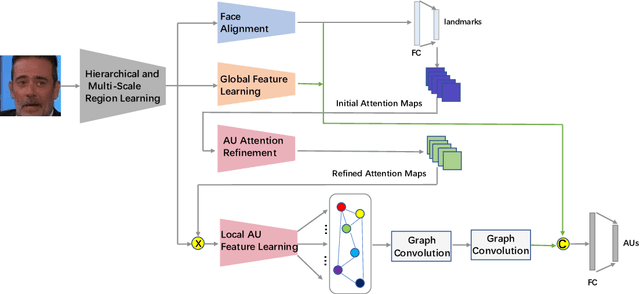Ruomeng Ding
Regularizing Hidden States Enables Learning Generalizable Reward Model for LLMs
Jun 14, 2024



Abstract:Reward models trained on human preference data have been proven to be effective for aligning Large Language Models (LLMs) with human intent within the reinforcement learning from human feedback (RLHF) framework. However, the generalization capabilities of current reward models to unseen prompts and responses are limited. This limitation can lead to an unexpected phenomenon known as reward over-optimization, where excessive optimization of rewards results in a decline in actual performance. While previous research has advocated for constraining policy optimization, our study proposes a novel approach to enhance the reward model's generalization ability against distribution shifts by regularizing the hidden states. Specifically, we retain the base model's language model head and incorporate a suite of text-generation losses to preserve the hidden states' text generation capabilities, while concurrently learning a reward head behind the same hidden states. Our experimental results demonstrate that the introduced regularization technique markedly improves the accuracy of learned reward models across a variety of out-of-distribution (OOD) tasks and effectively alleviate the over-optimization issue in RLHF, offering a more reliable and robust preference learning paradigm.
Everything of Thoughts: Defying the Law of Penrose Triangle for Thought Generation
Nov 12, 2023Abstract:Recent advancements in Large Language Models (LLMs) have revolutionized decision-making by breaking down complex problems into more manageable language sequences referred to as ``thoughts''. An effective thought design should consider three key perspectives: performance, efficiency, and flexibility. However, existing thought can at most exhibit two of these attributes. To address these limitations, we introduce a novel thought prompting approach called ``Everything of Thoughts'' (XoT) to defy the law of ``Penrose triangle of existing thought paradigms. XoT leverages pretrained reinforcement learning and Monte Carlo Tree Search (MCTS) to incorporate external domain knowledge into thoughts, thereby enhancing LLMs' capabilities and enabling them to generalize to unseen problems efficiently. Through the utilization of the MCTS-LLM collaborative thought revision framework, this approach autonomously produces high-quality comprehensive cognitive mappings with minimal LLM interactions. Additionally, XoT empowers LLMs to engage in unconstrained thinking, allowing for flexible cognitive mappings for problems with multiple solutions. We evaluate XoT on several challenging multi-solution problem-solving tasks, including Game of 24, 8-Puzzle, and Pocket Cube. Our results demonstrate that XoT significantly outperforms existing approaches. Notably, XoT can yield multiple solutions with just one LLM call, showcasing its remarkable proficiency in addressing complex problems across diverse domains.
ImDiffusion: Imputed Diffusion Models for Multivariate Time Series Anomaly Detection
Jul 03, 2023



Abstract:Anomaly detection in multivariate time series data is of paramount importance for ensuring the efficient operation of large-scale systems across diverse domains. However, accurately detecting anomalies in such data poses significant challenges. Existing approaches, including forecasting and reconstruction-based methods, struggle to address these challenges effectively. To overcome these limitations, we propose a novel anomaly detection framework named ImDiffusion, which combines time series imputation and diffusion models to achieve accurate and robust anomaly detection. The imputation-based approach employed by ImDiffusion leverages the information from neighboring values in the time series, enabling precise modeling of temporal and inter-correlated dependencies, reducing uncertainty in the data, thereby enhancing the robustness of the anomaly detection process. ImDiffusion further leverages diffusion models as time series imputers to accurately capturing complex dependencies. We leverage the step-by-step denoised outputs generated during the inference process to serve as valuable signals for anomaly prediction, resulting in improved accuracy and robustness of the detection process. We evaluate the performance of ImDiffusion via extensive experiments on benchmark datasets. The results demonstrate that our proposed framework significantly outperforms state-of-the-art approaches in terms of detection accuracy and timeliness. ImDiffusion is further integrated into the real production system in Microsoft and observe a remarkable 11.4% increase in detection F1 score compared to the legacy approach. To the best of our knowledge, ImDiffusion represents a pioneering approach that combines imputation-based techniques with time series anomaly detection, while introducing the novel use of diffusion models to the field.
Action Unit Detection with Joint Adaptive Attention and Graph Relation
Jul 09, 2021

Abstract:This paper describes an approach to the facial action unit (AU) detection. In this work, we present our submission to the Field Affective Behavior Analysis (ABAW) 2021 competition. The proposed method uses the pre-trained JAA model as the feature extractor, and extracts global features, face alignment features and AU local features on the basis of multi-scale features. We take the AU local features as the input of the graph convolution to further consider the correlation between AU, and finally use the fused features to classify AU. The detected accuracy was evaluated by 0.5*accuracy + 0.5*F1. Our model achieves 0.674 on the challenging Aff-Wild2 database.
 Add to Chrome
Add to Chrome Add to Firefox
Add to Firefox Add to Edge
Add to Edge